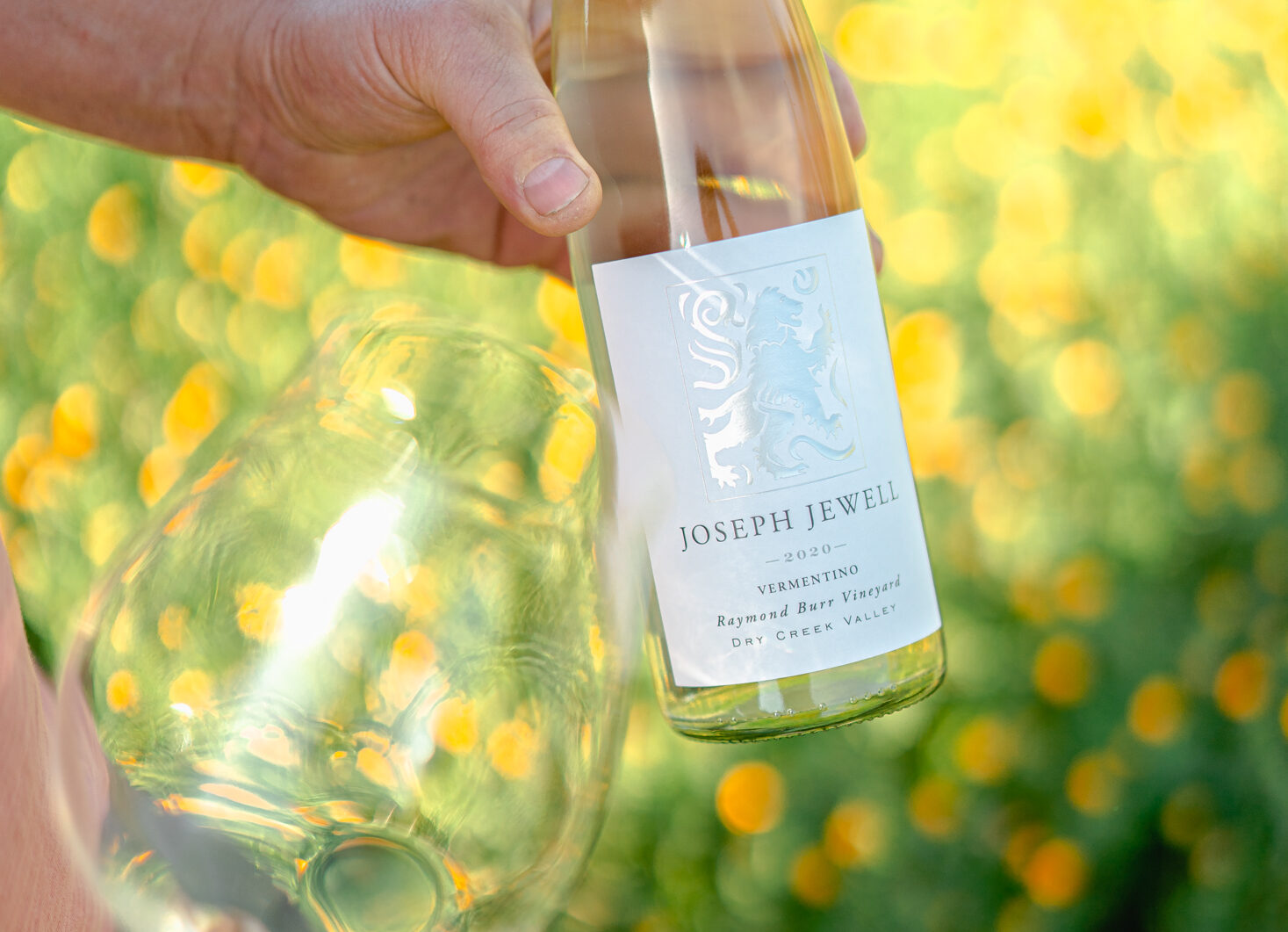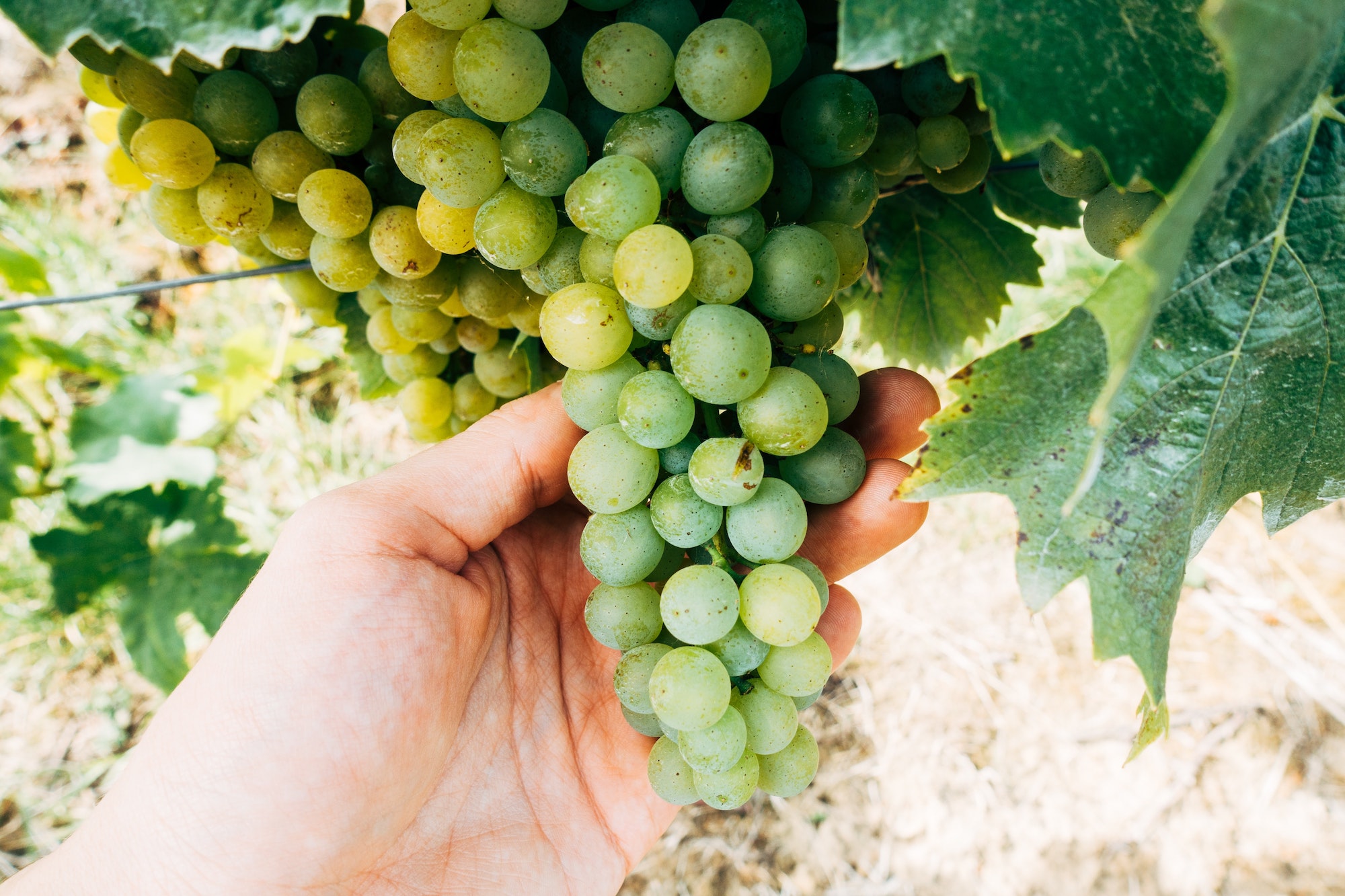
05 Aug Exploring Vermentino
Where Does Vermentino Come From?
If you ever venture to old-world Europe, keep your eyes peeled for wines by the name of Pigato (Liguria, Italy), Favorita (Piedmonte, Italy), or Rolle (Provence, France). All of these are localized names for Vermentino.
When exploring the Mediterranean basin you’ll find these common Vermentino names from Provence and Piedmont, to Tuscany and the islands of Sardinia and Corsica. All of these warmer climate regions near the Mediterranean provide Vermentino the optimal growing conditions with plenty of UV light to ripen easily and cooling winds from the sea.
As California’s wine growing regions boast a “Mediterranean climate,” you can often find great examples of Southern France and Northern Italian grape varietals. While Vermentino isn’t as common in these parts, varietals like Grenache, Syrah, Mourvedre, Cinsault, Barbera, Nebbiolo, and Dolcetto are. The Joseph Jewell Vermentino is sourced from the northwestern part of Dry Creek Valley in Sonoma County, an 8-mile long, north to south, narrow valley just outside of Healdsburg, at the Raymond Burr Vineyard.

What Does Vermentino Taste Like?
Vermentino isn’t like traditional white wines made from Chardonnay, Sauvignon Blanc, Chenin Blanc, Riesling, or even Grüner Veltliner. At first glance, you’ll notice the alluring color which often ranges from a straw yellow to a golden yellow hue, depending on when the grapes were picked and the amount of skin contact. On the palette, you’ll find a nice crispness, but the total acidity isn’t as high as a Sauvignon Blanc or a Riesling. Vermentino is actually a slightly lower acid white grape and what often lends to the crisp palette is an intense minerality from the soil that the vines grow in.
Aromatically and flavor profile-wise, Vermentino generously gives fresh fruit notes of honeydew, cantaloupe, lime zest, yellow grapefruit, daffodil flowers, green apple, and sliced almonds. These notes are found across growing regions from California to the Mediterranean.
Vermentino has a very unique characteristic that many people aren’t aware of– an outer waxy coating on each grape. This outer coating is similar to beeswax and is actually a type of carotenoid, a substance that you find in yellow and orange colored fruits and vegetables, like carrots. This carotenoid texture adds a beeswax texture on the palette of the final wine. Additionally, when Vermentino is allowed to age, and depending on the concentration of carotenoid wax, the wine can develop a petrol / diesel fuel aroma reminiscent of aged German and Australian Riesling.

How We Make Vermentino
Here at Joseph Jewell Wines, we’ve experimented with making Vermentino a few different ways. Currently, we have three different styles of Vermentino made from the same grapes harvested at the same time.
Pétillant Naturel Sparkling Vermentino | SHOP NOW
Our 2020 Sparkling Vermentino Pétillant Naturel, or Pét Nat, is a single fermentation sparkling wine, unlike Champagne which is a double fermentation sparkling wine. Pétillant Naturel is the original method of making sparkling wine before the monk Dom Perignon famously remarked, “come quick, I’m tasting the stars,” in the 17th century. It’s believed that the Romans began making wine in this method on accident by simply bottling their still fermenting wines. This method is also known as Method Ancestral, or the ancestral method. The Joseph Jewell Pét Nat is crisp, bright, and bursts with notes of floral honeysuckle, lemon verbena, lemon zest, orange rind, fresh brioche, and toasted almond, backed by a mouth-watering acidity and playful effervescence. Our Pét Nat is sure to be a new favorite!
Skin-Fermented Vermentino | SHOP NOW
Skin-fermenting is a method of fermentation by which the winemaker lets the grape skins and grape juice ferment together for a period of time. This is most often done with white grapes to extract the color, flavor, and aromas from the white grape skins. You may have also seen these styles of wines labeled as “orange wine,” and is a traditional way of making wine in places like the Republic of Georgia. For the 2019 Joseph Jewell Skin-Fermented Vermentino, winemaker Adrian left the Vermentino grapes and juice to ferment in a traditional clay pot known as an “amphora,” for 30 days. As clay is a porous material, it allows the wine to release carbon dioxide, a by-product of fermentation along with allowing the wine to micro-oxygenate which affects the wine’s color and softens tannin from the skins and seeds.

Direct Press, Still Vermentino | SHOP NOW
Our still Vermentino is our example of a classic still Italian white wine with an abundance of citrus, melon, and mineral aromas and flavors. We utilize the direct press method to make this wine. Essentially, once the grapes are harvested they are brought into the winery, put into a wine press that gently squeezes the grapes till they pop allowing the juice to collect. That juice is then put into a stainless steel tank to ferment till dry. Once the wine is done fermenting, it is pumped off the lees, or the dead yeast cells that fall to the bottom of the tank, chilled down and bottled. It is now ready for a label and to share with the world!
As you’ve read, there are many ways to make various styles of wine with slight changes in technique with the same grapes. In coming vintages we’ll be exploring fermenting Vermentino in both neutral oak barrels as well as Italian concrete tanks along with any other fun ideas we come up with. For now, grab some bottles of wine and pour yourself a glass.





